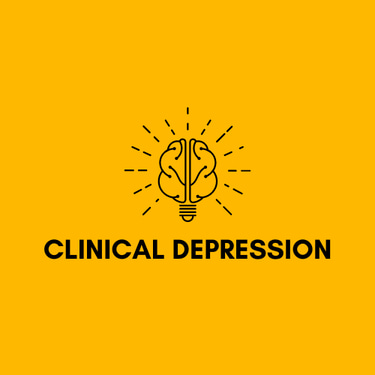For Questions: Text (833)233-0869
Depression Disorder Teletherapy: A Comprehensive Guide to Understanding and Managing Depression Through Online Therapy


Introduction
Depression is a complex mental health disorder that affects millions of people worldwide. Characterized by persistent feelings of sadness, hopelessness, and a lack of interest in daily activities, depression can severely impact an individual's quality of life. With the advent of teletherapy, also known as online therapy, individuals suffering from depression now have easier access to mental health care. This article will explore depression disorder teletherapy in depth, covering what it is, how it works, its benefits, and tips for getting the most out of your teletherapy experience.
What is Depression?
Before diving into teletherapy, it's essential to understand what depression is. Depression is more than just feeling sad or having a bad day; it's a chronic mental health condition that affects how a person thinks, feels, and behaves. There are several types of depression, including:
Major Depressive Disorder (MDD): The most common form, characterized by severe symptoms that interfere with daily life.
Persistent Depressive Disorder (PDD): Also known as dysthymia, this is a long-term form of depression with less severe but chronic symptoms.
Bipolar Disorder: Involves episodes of depression alternating with episodes of mania.
Seasonal Affective Disorder (SAD): Depression that occurs at specific times of the year, usually in the winter.
Postpartum Depression: Depression that occurs after childbirth.
Depression is often accompanied by other mental health conditions, such as anxiety, making it crucial to address both issues in treatment.
What is Teletherapy?
Teletherapy, also known as online therapy, is the delivery of mental health services through digital platforms. This can include video conferencing, phone calls, text messaging, and even email. Teletherapy has become increasingly popular, especially in the wake of the COVID-19 pandemic, as it offers a convenient and accessible way to receive therapy from the comfort of your home.
Teletherapy for depression disorder involves the same therapeutic techniques used in traditional in-person therapy sessions. Therapists use evidence-based methods like Cognitive Behavioral Therapy (CBT), Dialectical Behavior Therapy (DBT), and mindfulness practices to help individuals manage their symptoms of depression.
How Does Depression Disorder Teletherapy Work?
Depression disorder teletherapy works similarly to traditional therapy but with the added convenience of remote access. Here’s a step-by-step guide to how it works:
1. Finding a Teletherapist:
Research: Start by researching licensed therapists who specialize in depression and offer teletherapy services. Many platforms, such as BetterHelp, Talkspace, and Amwell, provide directories of therapists with user reviews.
Consultation: Most therapists offer an initial consultation to determine if they are a good fit for your needs. This is usually a short session where you can discuss your symptoms and therapy goals.
2. Scheduling Sessions:
Once you’ve found a therapist, you can schedule your sessions online. Teletherapy platforms usually offer flexible scheduling, making it easier to fit therapy into your busy life.
3. Attending Sessions:
Preparation: Ensure you have a quiet, private space for your session. This could be a room in your home where you won’t be interrupted.
Technology: You’ll need a stable internet connection, a computer or smartphone, and, in some cases, a webcam if you’re doing video sessions.
Engagement: During the session, your therapist will guide you through various therapeutic techniques. It's essential to be as engaged and open as you would be in a face-to-face session.
4. Between Sessions:
Homework: Your therapist may assign "homework" or exercises to complete between sessions. These activities are designed to reinforce the techniques learned during therapy.
Communication: Many teletherapy platforms offer messaging services where you can communicate with your therapist between sessions. This can be helpful for discussing progress or challenges you’re facing.
Benefits of Depression Disorder Teletherapy
Teletherapy offers numerous benefits, making it an attractive option for those seeking help for depression:
1. Accessibility:
Geographical Flexibility: You can access therapy from anywhere, whether you live in a rural area with limited mental health services or in a city with a busy schedule.
Physical Limitations: For individuals with physical disabilities or chronic illnesses, teletherapy eliminates the need to travel to appointments.
2. Convenience:
Flexible Scheduling: Many teletherapists offer sessions outside of traditional business hours, including evenings and weekends.
No Commute: Save time and money by eliminating the need to travel to and from therapy appointments.
3. Comfort:
Familiar Environment: Being in your own home during sessions can help you feel more relaxed and open during therapy.
Reduced Stigma: Some people may feel more comfortable seeking therapy online due to the privacy it offers, reducing the stigma associated with mental health treatment.
4. Affordability:
Lower Costs: Teletherapy sessions can often be less expensive than in-person sessions, and many insurance plans now cover online therapy.
No Additional Expenses: You save on transportation costs and may even find therapists who offer sliding scale fees.
5. Continuity of Care:
Consistent Support: Teletherapy ensures that you can continue your therapy even if you relocate or travel frequently.
Crisis Intervention: Many teletherapy platforms offer immediate access to therapists during a mental health crisis.
Challenges of Depression Disorder Teletherapy
While teletherapy offers many benefits, there are also some challenges to consider:
1. Technology Issues:
Technical Difficulties: Poor internet connections or platform glitches can interrupt sessions, causing frustration.
Digital Literacy: Some individuals may struggle with the technology required for teletherapy, particularly older adults or those less familiar with digital tools.
2. Lack of Physical Presence:
Non-Verbal Cues: Therapists may miss important non-verbal cues, such as body language, that can provide insights into a patient’s mental state.
Comfort Level: Some people may feel less connected to their therapist without face-to-face interaction, which can affect the therapeutic relationship.
3. Privacy Concerns:
Confidentiality: Ensuring that your teletherapy sessions are private can be challenging if you share a living space with others.
Data Security: There’s a risk of data breaches or unauthorized access to your personal information, although most platforms use encryption to protect your privacy.
Tips for Maximizing the Effectiveness of Depression Disorder Teletherapy
To get the most out of your teletherapy sessions, consider the following tips:
1. Create a Distraction-Free Environment:
Choose a quiet, comfortable space for your sessions. Let household members know not to disturb you during this time.
2. Be Open and Honest:
Just like in traditional therapy, it’s essential to be open and honest with your therapist. Share your thoughts, feelings, and concerns without holding back.
3. Stay Consistent:
Regular sessions are crucial for making progress in therapy. Stick to your scheduled appointments and complete any assignments your therapist gives you.
4. Practice Self-Care Between Sessions:
Engage in self-care activities that complement your therapy, such as exercise, mindfulness, and healthy eating. These practices can enhance your mental well-being and support your progress in therapy.
5. Communicate Any Issues:
If you experience technical difficulties or feel disconnected from your therapist, communicate these issues as soon as possible. They can help troubleshoot problems or adjust their approach to better suit your needs.
Finding the Right Depression Disorder Teletherapy Platform
With the growing popularity of teletherapy, numerous platforms are available. Here are some factors to consider when choosing a teletherapy service:
1. Therapist Qualifications:
Ensure that the platform connects you with licensed therapists who specialize in depression treatment. Check their credentials and areas of expertise.
2. Platform Features:
Look for platforms that offer features that meet your needs, such as video, audio, and text options, as well as secure messaging between sessions.
3. Cost and Insurance:
Compare costs and check if your insurance covers teletherapy. Some platforms offer sliding scale fees or subscription models that can make therapy more affordable.
4. User Experience:
Read reviews from other users to get a sense of the platform’s usability and the quality of therapy provided.
Conclusion
Depression disorder teletherapy is a powerful tool that makes mental health care more accessible and convenient. Whether you’re dealing with major depressive disorder, persistent depressive disorder, or another form of depression, teletherapy offers a flexible and effective way to manage your symptoms and improve your quality of life. By choosing the right therapist and platform, creating a conducive environment, and staying committed to the process, you can make significant strides in your journey toward mental well-being.
©2025
Clinical Depression
For Questions: Text
(833) 233-0869
